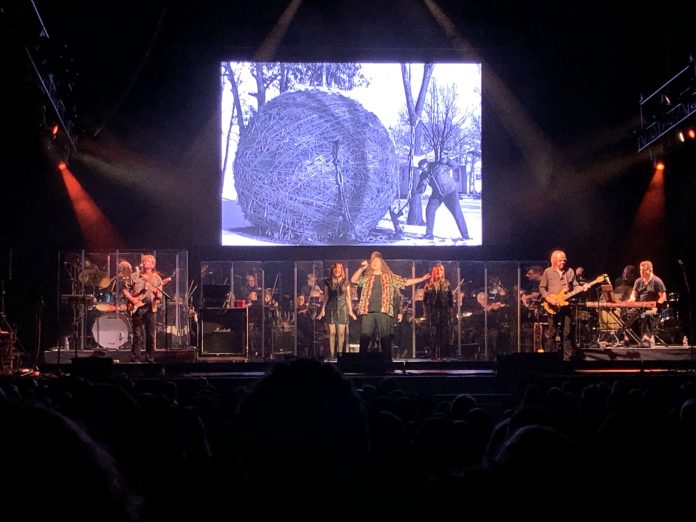
Urban issues are not unique to one city. Casting around for for successes to copy, we have to examine what it means to remix and adapt a concept to a new situation.
Really, there’s no better teacher for doing that right than “Weird” Al Yankovic.
Since his time sending parody songs to the Dr. Demento show in the late 1970’s through a peak in the heyday of MTV, Weird Al is now in long service to society as the ambassador of pop culture’s goofy mirror universe. Long enough to warrant New York Times retrospectives of his career and Salon think pieces about his music as antidote to capitalism.
While rewriting pop songs as homages to flavors of ice cream may sound like trivial nonsense, it’s not easy. For anyone who’s hasn’t tried, you get one good pun or perhaps a wacky chorus, then start spiraling into the depths of finding a rhyme for penguin. Because penguins are always funny. There’s a reason they recruit comedy writers from Cambridge and Harvard. Or Cal Poly’s architecture school. Now Weird Al’s been doing this for forty years.
Professor Yankovic’s Class Is In Session
He gets the basics right. The parody has to sound like the song he’s covering. Even through his accordion and hard working singing voice, the music is there. It’s impossible to sell people songs that don’t sound good. It can be strange, ridiculous, or wacky. But Brian May has to know you’re singing his songs. Yankovic’s effort as a musician is plain and successful. Even the song Harvey the Wonder Hamster – which is 26 seconds long – never felt like it was a slacker track. When played with a complete string orchestra, it is DIVINE.
Though there’s some balance of fair use and parody, Yankovic always clears his songs with the original musicians. Newer artists say that a Weird Al parody means they’ve made it to a significant level of success. But it also shows a level of mutual respect and professionalism within a creative, often combative, industry.
Getting those basics correct allows something unexpected: the ability to be unexpected. From the 11 minute long sauerkraut joke that is the song Albuquerque, to getting the endorsement and backup guitar of Mark Knopfler, the weirdest part of Weird Al’s music is that his songs can continue to surprise with joyful creativity. It can be unexpectedly dissonant, where the song Word Crimes turns Robin Thicke’s borderline Blurred Lines into a lesson in proofreading one’s tweets. It can be unexpectedly truth telling, such as Perform This Way moving from a parody of Lady Gaga to a defense of her creativity. Or unexpectedly sweet, like the entirety of his movie UHF:
Similarly, Weird Al’s remixes span the universe of music. At times, the joke is the dissonance. There are a thousand songs that could have tried to carry an extensive meditation on the Amish. Only by tying the phrase “I’ve churned butter once or twice” to Coolio’s Gangsta’s Paradise do we get something transcendent.
Weird Al’s music understands that satire only starts with the song itself. What it truly builds on the song’s popularity. Like a Surgeon starts being funny because it rhymes with Like A Virgin. The parody works because the original was a monster hit and Weird Al’s video (remember those?) sold his goofy dancing and sight gags in direct contrast to Madonna’s slow struts on location across Europe.
The epitome of understanding popularity would be the song The Saga Begins. It parodied Don MacLean’s American Pie 28 years after the original. But it worked because it was about the newly released Star Wars Episode I. Shoehorning the Star Wars canon into the karaoke closing-time standard emphasizes how the parody is about both, neither, and all our myth-making wrapped up into one. It also worked because it correctly focused on a young Obi-Wan, instead of spending way too long on pod racing.
Weird is in the eyes of the creator.
On first glance, Weird Al urbanism may sound all floral shirts and finding the marble in the oatmeal. But it’s about getting the fundamentals correct so that there’s a solid foundation for all the bizarro universe stuff. Picasso was a pretty good realistic painter. Hunter S. Thompson could report a story. Weird Al knows how to make music. Without a solid foundation, the space for creativity narrows considerably. As does the opportunity for success.
When urbanists steal from one city and transplant an idea to another, we skip that solid foundation part and wonder why the new program or project isn’t meeting with the same success. It leads to truly absurd discussions. Seattle was convinced to fund and bail out a convention center expansion because we needed to compete with other cities. Steal their building ideas, looking for their successes. But the new facility and dependent tourism is driving police policy to “clean up” the area and make sure the expanded convention business is successful. We got the formula backwards, attempting to plant one expensive, narrow image of success on a mismatched and uneven foundation.
Weird Al’s fundamental understanding of popularity should also be a guide here. When we copy an idea, it’s probably not because of the specific project. It’s the project’s success we’re looking to replicate. Weird Al doesn’t parody good-but-unknown songs. Planners don’t sell the city council on good-but-unknown policies. Sure, a new ballpark might be nice, but what we really want is the electric intensity of the world gazing at us like it did the opening of Camden Yards.
Planners and architects are far too earnest to to say that. So we fall back on putting up the correct brick colored archways on every dead concrete donut and wondering what went wrong. And we often miss how popularity generates popularity. We rarely ask “why did we hear about this project?” Urbanists don’t pay attention to the marketing that steers which concepts we see as successful. From awards to conference sessions to glossy magazines, a project’s success is often sold to design professionals.





Most unfortunate is how foundational failures and misunderstood popularity creates a crisis-level aversion to anything out of the ordinary. Can we tackle homelessness like New York or Vancouver? Walkability like Paris? Yes, or we could aim so much higher. We don’t need to copy prior examples of successful arenas to create something new and iconic. When we define our success narrowly as replicating someone else’s, we end up missing the good stuff that’s already there and the unexpected ideas that are possible. The best parody and satire shows us an underlying truth. Weird Al screams at us not to be so timid. We do well when we listen.
He also says to plan better transit. We should do that too.
Alas, there is no analog in planning or design for the glorious Weird Al Polka Medley. Except potentially the postmodern design hellscape that is the Cheesecake Factory. But we urbanists can understand that his success is not simply about piggybacking on someone else’s. When we compare notes about good ideas, we must recognize what it is we’re actually copying.
And if you can’t do that, at least you can take a small bit of comfort in knowing that somewhere out there in this crazy ol’ mixed-up universe of ours there’s still a little place called Albuquerque.
Ray Dubicki is a stay-at-home dad and parent-on-call for taking care of general school and neighborhood tasks around Ballard. This lets him see how urbanism works (or doesn’t) during the hours most people are locked in their office. He is an attorney and urbanist by training, with soup-to-nuts planning experience from code enforcement to university development to writing zoning ordinances. He enjoys using PowerPoint, but only because it’s no longer a weekly obligation.

